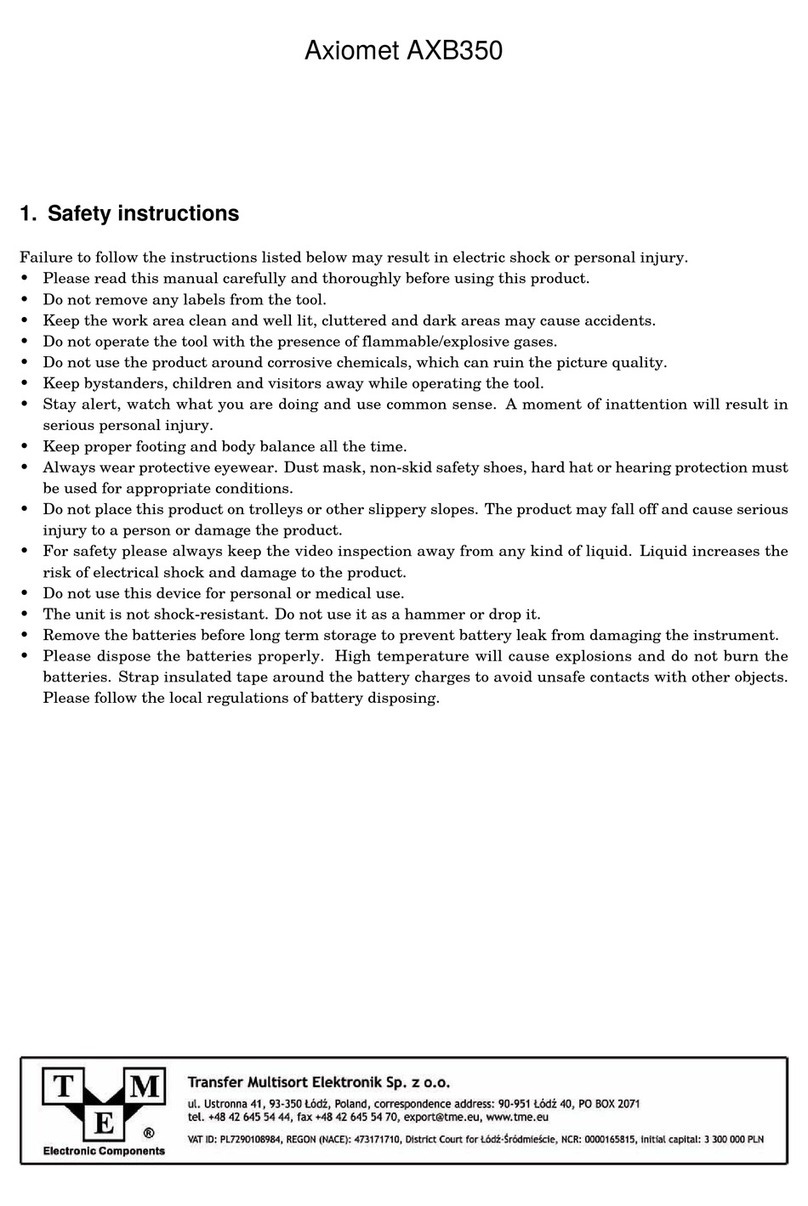
4.3. Accessories installation
Accessories and camera head are connected using threaded screw. It is recommended to put on the thread
protector when no attachment is installed. When use the three accessories shown in Fig.2, remove the thread
protector before put on other accessories.
4.4. Basic Operations
• Facing the LCD screen, press and hold ” ” for 2s to turn on the product, and LCD screen will be powered
on (press this button again for 2s to turn off the unit);
• Press ”+” to increase LED brightness;
• Press ”-” to decrease LED brightness;
• Press ” ” to rotate the image each time by 180.
• Press ” ” to zoom the picture from x1.0 to x1.5, x2.0 , x2.5, x3.0, x3.5 , x4.0
4.5. Operation Precautions
Please read the safety instructions thoroughly before operation, choose a proper working area to reduce the risk
of accidents. The probe is flexible, which helps you to get to hard-to-reach areas. Please don’t insert or bend the
camera probe by force. Please do not over bend the probe (normally, the bending radius should more than 5cm),
so as not to cause permanent damage to the probe. Don’t use the probe or camera head to remove barricades,
clear pathways or clogged areas. It must not be used as a fishing rod or tape. The hand-held LCD display is not
waterproof. The camera head and its cover are waterproof, but not acid-proof or fireproof. Touch with these
materials will damage the camera head’s protective plastic. Do not immerge the camera head into corrosive,
oily places or contact high-temperature objects. Don’t place the inspection into anything or anywhere that may
contain a live electrical charge. Please check following methods to avoid injury.
• For walls: For inspecting inside the walls, make sure the electricity of the whole house is shut down before
using the tool.
• For pipes: If you suspect a metal pipe could contain an electrical charge, have a qualified electrician to
check the pipe before using. Ground circuit, in some cases, can be returned to the cast metal pipes and
cause them to be charged.
• For automobiles:Make sure the automobile is not running during inspection. Metal and liquid under the
hood may be hot. Don’t get oil or gas on the camera head.



























